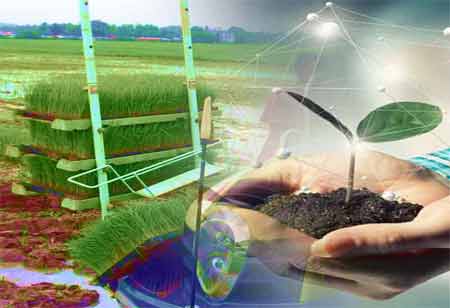Thank you for Subscribing to Agri Business Review Weekly Brief
Modern Agriculture Leveraging Automation
Automated farming has emerged as a transformative force in the agriculture industry. Automated farming is revolutionizing traditional farming practices by leveraging

By
Agri Business Review | Thursday, April 04, 2024
Stay ahead of the industry with exclusive feature stories on the top companies, expert insights and the latest news delivered straight to your inbox. Subscribe today.
Automated farming represents a paradigm shift in the agriculture industry, offering unparalleled efficiency, productivity, and sustainability opportunities.
FREMONT, CA: Automated farming has emerged as a transformative force in the agriculture industry. Automated farming is revolutionizing traditional farming practices by leveraging advanced technologies such as robotics, drones, sensors, and AI. The most significant benefit of automated agriculture is its ability to enhance efficiency and productivity. Automation minimizes manual labor requirements while maximizing precision in various farming tasks such as planting, watering, fertilizing, and harvesting. Robots with AI algorithms can perform these tasks with unparalleled accuracy and speed, leading to increased crop yields and reduced resource wastage.
Automation enables round-the-clock monitoring and management of crops, optimizing growth conditions and mitigating risks associated with pests, diseases, and adverse weather conditions. Automated farming plays a crucial role in promoting sustainability in agriculture. Automation minimizes environmental impact and reduces chemical runoff into water bodies by precisely managing inputs such as water, fertilizers, and pesticides. Automated systems can employ data analytics to optimize resource usage, minimize waste and conserve natural resources. Using drones for aerial monitoring enables early detection of crop diseases and nutrient deficiencies, facilitating targeted interventions and reducing the need for blanket pesticide application.
Adopting automated farming technologies has profound economic implications for the agriculture industry. While initial investment costs may be high, the long-term benefits of increased efficiency and productivity outweigh the expenses. Automation reduces labor costs and dependence on seasonal labor, mitigating the impact of labor shortages and rising wages. It provides higher crop yields and improved quality, increasing farmers' revenues. Automation creates opportunities for technology companies specializing in agricultural robotics, sensors, and AI, stimulating innovation and economic growth in related industries. Automated farming enables farmers to optimize resource usage, minimize environmental impact, and increase profitability.
Despite its transformative potential, automated farming also poses challenges and considerations. One concern is the digital divide, as small-scale farmers may lack access to the necessary technology and expertise. Bridging this gap requires targeted investment in infrastructure and capacity-building programs. The reliance on technology raises concerns about data privacy and cybersecurity, highlighting the need for robust regulations and security measures to protect sensitive agricultural data. Automated farming can have significant socio-economic impacts on rural communities and agricultural labor markets. The transition to automated farming may exacerbate existing inequalities, particularly in regions with limited access to technology and education.
While automation reduces the demand for manual labor in certain tasks, it creates new opportunities for skilled workers in areas such as robotics maintenance, data analytics, and software development. Addressing these disparities requires comprehensive policies focused on skills training, job creation, and equitable access to technology. Realizing the full potential of automated farming requires addressing access, security, and socio-economic equity challenges. With the right policies and investments, automated farming has the potential to revolutionize agriculture and ensure food security for future generations.





